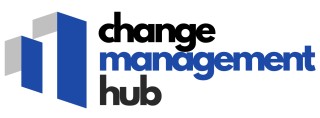
What is a Labor Management System?
Defining the Core Functionality of a Labor Management System
A Labor Management System (LMS) serves as a critical tool for businesses aiming to enhance their workforce efficiency and productivity. This type of management software facilitates the effective tracking and optimization of employee performance, ensuring that labor costs are kept in check. Essentially, an LMS helps streamline various aspects of workforce management, making it easier for businesses to align their labor practices with overarching organizational goals. In its primary role, an LMS integrates with existing systems to provide real-time data and insights regarding employee time tracking, performance management, and task allocation. By harnessing such data-driven insights, organizations can make better-informed decisions when it comes to maximizing employee productivity while maintaining compliance with labor laws. Effective time and attendance systems, along with tailored software tools, enhance both employee engagement and overall business performance. To achieve the best results, labor management systems must be aligned with industry best practices. For instance, accurate time labor tracking ensures that businesses can analyze labor costs effectively, while compliance labor requirements are upheld through automated alerts and updates. In the complex landscape of labor management, an LMS bridges the gap between traditional management methods and modern, tech-driven solutions. Organizations looking to stay competitive must consider the importance of leveraging an LMS to negotiate the dynamics of the supply chain and workforce regulations. Such strategic approaches underscore the need for organizations to develop a comprehensive portfolio governance strategy, enabling seamless integration of labor management initiatives. For further insights on harmonizing such strategies, delve into the art of effective portfolio governance in change management.The Role of Labor Management Systems in Change Management
The Intersection of Labor Management Systems and Change Management
In the dynamic landscape of business operations, change management is a pivotal process that ensures smooth transitions and adaptations. A Labor Management System (LMS) plays a critical role within this context by optimizing workforce efficiency and facilitating seamless change. These systems act as vital tools to help businesses navigate the complexities that arise when implementing change. Change management involves meticulous planning, and LMS software can significantly aid in this process by providing real-time insights and data-driven decisions. By employing LMS, businesses can track and analyze employee performance, time, and attendance, enabling them to manage labor costs effectively. This employee-centric approach ensures that the workforce is aligned with the evolving business goals, maintaining productivity and compliance. One of the best practices in change management is to foster employee engagement. By using management systems, businesses can enhance employee involvement, driving a more transparent and inclusive environment. LMS helps bridge communication gaps, allowing employees to adapt to new processes and policies with ease. Moreover, as businesses work towards optimizing their workforce, labor management systems serve as an anchoring framework. These systems provide the necessary structure for performance management and time tracking, crucial in maintaining momentum during periods of change. For a deeper understanding of how to craft an effective policy to support these transitions, you can explore more on change management policy creation.Key Features of Effective Labor Management Systems
Essential Components for Successful Adoption of Labor Management Systems
Implementing a labor management system (LMS) effectively requires businesses to identify key features that enhance the system’s capabilities. Understanding these features allows organizations to optimize workforce operations, improving employee engagement, performance, and overall productivity.
Here's a look at essential components that define the best practices in labor management software:
- Real-Time Tracking: An effective LMS provides real-time tracking of employee activities, ensuring accurate time attendance and compliance with labor laws. This not only ensures payroll accuracy but also allows businesses to keep labor costs in check.
- Data-Driven Insights: Leveraging data empowers businesses to make informed decisions regarding workforce management. By analyzing patterns, companies can optimize workforce schedules and enhance performance management.
- Integration with Other Systems: Seamless integration with existing systems, such as supply chain and performance management tools, is crucial for the LMS to function as part of a comprehensive management framework.
- User-Friendly Interface: The software should be intuitive and easy for employees and managers to use, minimizing training time and improving employee engagement.
- Compliance Tools: Ensuring compliance with labor regulations is critical. Effective LMS includes tools for monitoring and adjusting to compliance changes, particularly in complex environments.
A labor management system with these key features helps businesses streamline processes and improve overall productivity. As organizations navigate the complexities of change management, having reliable tools and systems in place is essential. To further understand how labor management systems play a vital role in change management, exploring systems' operational analysis can provide additional insights.
Challenges in Implementing Labor Management Systems
Overcoming Implementation Hurdles in Labor Management Systems
Integrating a Labor Management System (LMS) into an organization poses a set of distinctive challenges. As businesses strive to improve efficiency and employee performance, the roadblocks faced during implementation can significantly impact the overall success of the change management initiative. The primary challenge lies in ensuring that the chosen management software aligns with the organization's unique business processes and compliance labor requirements. Selecting a one-size-fits-all tool often leads to mismatches in functionality, which can hinder productivity rather than enhance it. Therefore, careful consideration of the management system's capabilities relative to workforce management objectives is crucial. Furthermore, successful implementation requires companies to surmount resistance from employees. Engagement strategies are key to securing buy-in from the workforce, ensuring that they understand the benefits of the new system and feel confident in using the tools provided. This may involve comprehensive training and ongoing support to foster employee commitment, which in turn can optimize workforce productivity. Another substantial hurdle is the integration with existing systems. Organizations depend on a myriad of data systems for time tracking, supply chain management, and performance management. The new LMS must seamlessly interface with these systems to provide real-time data and insights without causing disruptions. Cost considerations also play a critical role during the implementation phase. Businesses must evaluate both the initial cost and the long-term expense of operating the system, balancing these financial considerations against the anticipated gains in efficiency and labor costs reduction. Finally, adapting to the ever-evolving landscape of labor laws and regulations requires a highly adaptive labor management system that can assure compliance over time. This entails not only the technological flexibility of the system but also vigilant monitoring and updates as compliance guidelines evolve. Addressing these challenges with a strategic approach can lead to a successful implementation of labor management systems, ultimately driving improved business outcomes through enhanced performance and effective workforce management.Case Studies: Successful Labor Management System Implementations
Real-World Examples of Successful LMS Implementations
In the realm of change management, the integration of a labor management system (LMS) can significantly enhance operational efficiency and employee engagement. Here, we explore some real-world examples where businesses have successfully implemented LMS to optimize their workforce and improve productivity.
Retail Giant Optimizes Workforce Management
A leading retail company faced challenges with labor costs and employee time tracking. By implementing a comprehensive LMS, they were able to streamline their workforce management processes. The system provided real-time data on employee attendance and performance, allowing managers to make informed decisions. As a result, the company saw a reduction in labor costs and an increase in overall productivity.
Manufacturing Firm Enhances Compliance and Performance
A manufacturing firm struggled with compliance labor issues and performance management. By adopting an advanced LMS, they improved their compliance with labor laws and optimized workforce allocation. The system's data-driven insights helped the firm enhance employee performance and ensure adherence to regulatory requirements. This led to better employee engagement and a more efficient production line.
Healthcare Provider Improves Time Tracking and Cost Management
In the healthcare sector, a provider implemented an LMS to address challenges in time attendance and cost management. The software offered robust tools for time labor tracking and performance management, enabling the provider to manage labor costs effectively. The system's real-time tracking capabilities ensured that the healthcare provider maintained high standards of care while optimizing their workforce.
Logistics Company Boosts Productivity and Compliance
A logistics company faced issues with supply chain management and compliance labor. By integrating an LMS, they improved their tracking systems and ensured compliance with industry standards. The management software provided valuable insights into workforce performance, helping the company to boost productivity and reduce operational costs.
These case studies highlight the transformative impact of labor management systems in various industries. By leveraging the best practices and tools offered by LMS, businesses can navigate the complexities of change management and achieve sustainable growth.













